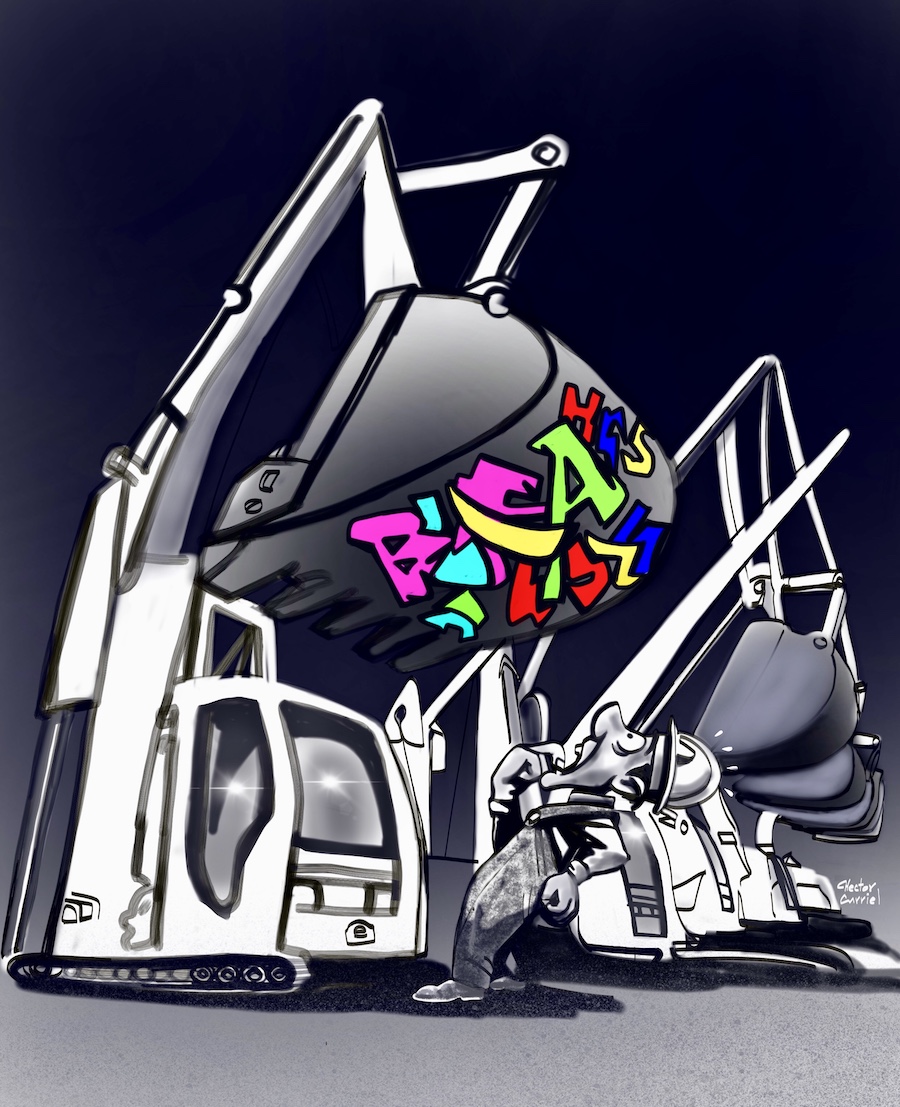 It happens all too often. Heavy equipment left overnight at a jobsite becomes the latest target for a tagger, a graffiti artist intent on leaving his or her mark. Tagging is the distinctive, albeit illegal, depiction of one’s name or initials – a personalized signature or hand style unique to the tagger. Using an aerosol spray can, generally in vivid and bright colors, the tagger works quietly in the shadows, hoping to make a big impression.
It happens all too often. Heavy equipment left overnight at a jobsite becomes the latest target for a tagger, a graffiti artist intent on leaving his or her mark. Tagging is the distinctive, albeit illegal, depiction of one’s name or initials – a personalized signature or hand style unique to the tagger. Using an aerosol spray can, generally in vivid and bright colors, the tagger works quietly in the shadows, hoping to make a big impression.
Of course, marking up private property without permission is a crime. In most states the placement of graffiti is an act of criminal mischief and considered vandalism, punishable by a fine or even jail time. Despite this, taggers continue to look for new places to place their art. This results in many millions of dollars of damage. It was recently reported that in the United States alone some 12 billion dollars are spent annually cleaning up graffiti.
Knowing this, what should you do to minimize the potential for tagging of your construction equipment.
- Secure your equipment inside a fenced area, with properly posted Private Property and No Trespassing signs;
- Light up the site with motion activated outdoor security flood and spot lights;
- Place motion sensor alarms on the equipment;
- Restrict access to authorized personnel; and
- Clean up and remove prior tagging or graffiti any equipment.
Taggers generally don’t want to be seen and prefer not to attract attention while they’re creating their “art”. Keeping equipment behind a secure perimeter; having alarms which are triggered when someone unauthorized approaches; and not allowing equipment to remain tagged, possibly attracting other graffiti vandals, all will go a long way to minimizing if not eliminating the damage of graffiti tagging.
What is concrete pumping, and how does it work?
Concrete pumping involves using a machine with two cylinders and pistons to continuously move liquid concrete from a hopper to a discharge pipe, utilizing air pressure and valves to facilitate the process.
What are the key types of concrete pumps and their applications?
There are truck-mounted pumps with articulating booms for large projects, trailer or stationary pumps for smaller jobs, and specialized pumps, such as rail-mounted ones, designed for specific applications like tunnels.










































